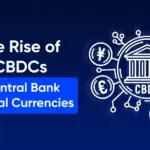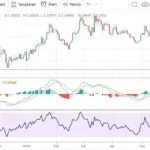In the rapidly evolving world of digital finance, one trend stands out as a game-changer — super apps. Originally popularized in Asia, super apps are multifunctional platforms that integrate a variety of services — from payments and banking to shopping, ride-hailing, and even healthcare — all within a single ecosystem. As consumers demand convenience, personalization, and speed, super apps are redefining how people interact with financial services.
1. What Exactly Are Super Apps?
A super app is essentially an all-in-one digital platform designed to serve multiple needs through a single interface. Instead of switching between separate apps for messaging, payments, or e-commerce, users can access everything in one place.
For example:
- WeChat in China allows users to chat, pay bills, shop online, book taxis, and even apply for loans.
- Grab and Gojek in Southeast Asia have evolved from ride-hailing apps into full-fledged financial ecosystems offering mobile wallets, insurance, and investment services.
This seamless integration makes super apps highly attractive to consumers — and increasingly influential in the financial technology landscape.
2. Why Super Apps Are Dominating Digital Finance
The rise of super apps is driven by a combination of user convenience, data integration, and ecosystem efficiency. Here’s how they’re transforming the financial experience:
- Unified Financial Management
Users can manage payments, transfers, budgeting, and even investments within one app. This eliminates friction and creates a smoother financial journey. - Embedded Finance
Super apps often incorporate embedded financial services, meaning users can access loans, insurance, or payment options directly during transactions without leaving the platform. - Data-Driven Personalization
By analyzing user behavior across multiple services, super apps can provide personalized financial recommendations, spending insights, and targeted offers. - Increased Financial Inclusion
In emerging markets, super apps have become gateways for the unbanked and underbanked to access financial services using only a smartphone — reducing barriers to participation in the digital economy.
3. The Role of Fintech and Banks
Fintech companies and banks are both racing to participate in the super app ecosystem — but their strategies differ.
- Fintech Innovators
Fintech startups often act as service providers, offering APIs and modular financial solutions that can be embedded into super apps. - Banks as Partners
Traditional banks, on the other hand, are beginning to collaborate with super app platforms to extend their reach and retain relevance in a mobile-first economy.
In this symbiotic relationship, banks provide regulatory credibility and liquidity, while super apps deliver user engagement and innovation.
4. The Challenges Ahead
While super apps promise unprecedented convenience, they also raise important challenges:
- Data Privacy and Security
The integration of financial, personal, and lifestyle data within one platform increases cybersecurity risks. Stricter regulations and encryption protocols are essential. - Monopoly Concerns
The dominance of a few large super apps could limit competition, stifle innovation, and create dependency on single ecosystems. - Regulatory Complexity
Financial regulations vary across regions. Super apps operating internationally must navigate complex compliance requirements involving payments, lending, and data governance.
5. The Global Outlook
Asia currently leads the way in super app adoption, but the concept is rapidly spreading to other regions. In the U.S. and Europe, companies like PayPal, Revolut, and Cash App are gradually integrating more lifestyle features — such as shopping, crypto trading, and budgeting tools — signaling a move toward super app status.
In Africa and the Middle East, mobile-first ecosystems such as M-Pesa and Careem are driving digital inclusion by combining financial services with everyday utilities.
6. The Future: Super Apps as Financial Ecosystems
The next generation of super apps will likely blur the lines between finance, commerce, and lifestyle even further. We may soon see AI-powered assistants managing budgets automatically, blockchain-based payments enabling instant cross-border transactions, and biometric security ensuring seamless authentication.
Super apps will not just be tools for payments — they will become digital financial ecosystems where every user action is connected, personalized, and powered by data intelligence.
Conclusion
Super apps are redefining digital finance by unifying multiple services under one digital roof. They offer convenience, accessibility, and inclusion — three pillars of modern financial innovation. While challenges around data privacy and regulation persist, the potential for transformation is immense.
As more fintechs and banks embrace this model, one thing is clear: the future of digital finance may not belong to individual apps, but to ecosystems — and super apps are leading the way.















